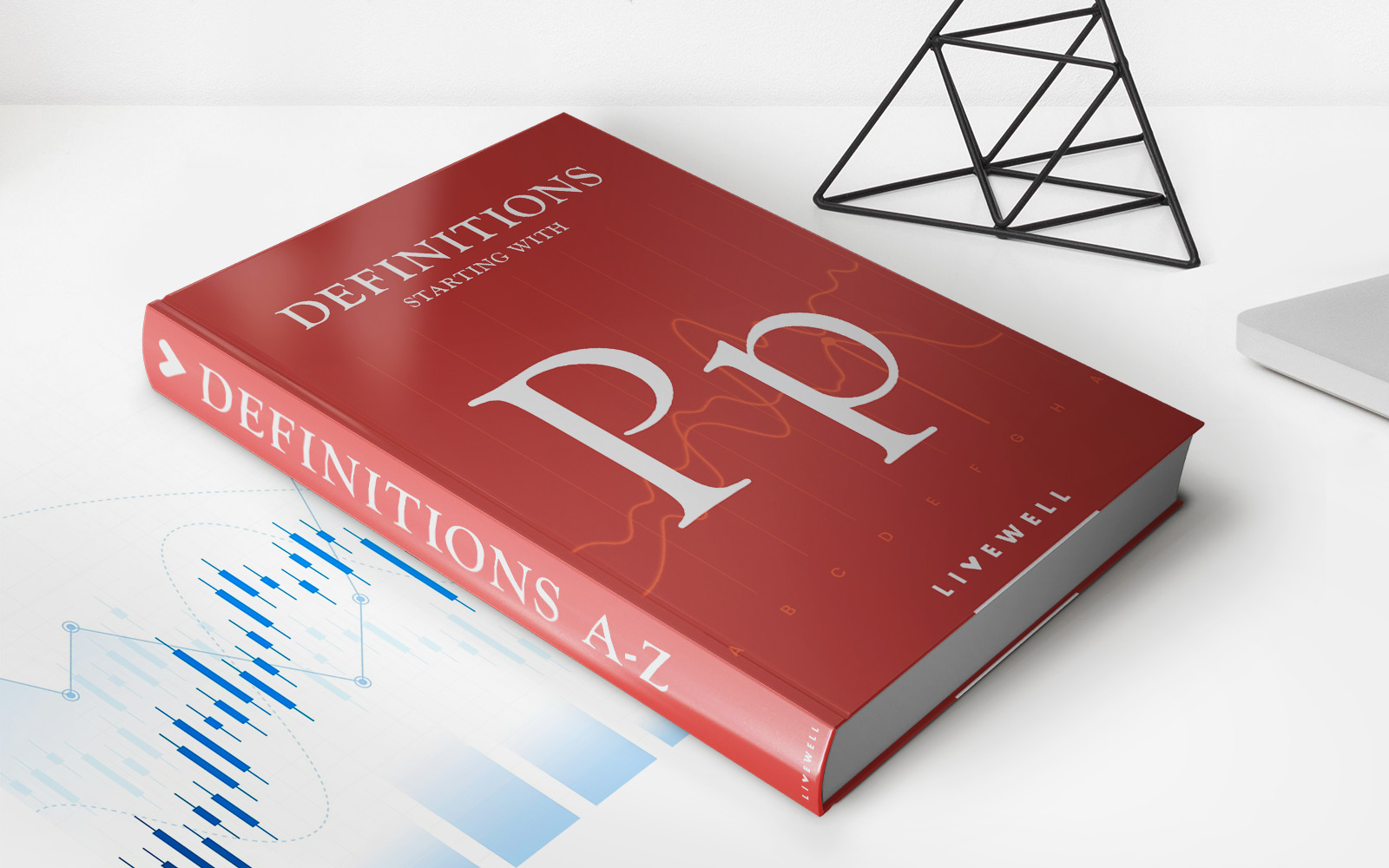

Finance
What Does Bind Mean In Insurance?
Modified: December 30, 2023
Learn the meaning of "bind" in insurance and how it affects your financial coverage. Explore the finance aspect of insurance policies and understand its implications.
(Many of the links in this article redirect to a specific reviewed product. Your purchase of these products through affiliate links helps to generate commission for LiveWell, at no extra cost. Learn more)
Table of Contents
Introduction
Welcome to the world of insurance! Whether you’re new to the industry or have been dealing with insurance policies for some time now, you’ve likely come across the term “bind” or “binding” when it comes to insurance coverage. Understanding what “bind” means in insurance is essential for both insurance professionals and policyholders alike. In this article, we will explore the concept of bind in insurance, its meaning, and the process involved.
When it comes to insurance, the term “bind” refers to the act of making a commitment to provide insurance coverage to an individual or entity. In simpler terms, it is the official acceptance of an insurance application, resulting in a binding agreement between the insurance company and the insured.
Insurance policies are typically binding contracts that outline the terms and conditions under which the insurer will provide coverage for specific risks or events. Binding coverage is crucial as it ensures that the policyholder is protected in case of unforeseen circumstances such as accidents, damages, or losses.
Now that we have a general understanding of what “bind” means in insurance, let’s delve deeper into the different aspects of binding coverage, including the binding authority, the process of binding coverage, and the difference between binding and quoting.
Definition of Bind in Insurance
In the context of insurance, “bind” refers to the process of officially accepting an insurance application and entering into a binding agreement to provide coverage to the insured individual or entity.
When an insurance company agrees to bind coverage, it means that they have committed to taking on the risk associated with the policy. This commitment is typically made after conducting a thorough evaluation of the application, assessing the level of risk involved, and determining appropriate premium rates.
Binding coverage is a critical step in the insurance process as it marks the point at which the insured becomes protected under the terms and conditions outlined in the insurance policy. Once binding occurs, the insurance company is legally obliged to honor the terms of the policy and provide coverage in the event of a covered loss or claim.
It’s important to note that the specific timeframe for which coverage is bound can vary depending on the type of insurance policy and the terms negotiated between the insured and the insurer. For some types of policies, the coverage may be bound for a specific term, such as one year, while for others, it may be bound for a shorter duration, such as a month or even a day.
The binding process usually involves the completion of an application form, which requires the insured individual or entity to provide relevant personal or business information, details about the type of coverage desired, and any additional information that may be necessary for the underwriting process. Once the application is submitted, the insurance company assesses the risk and determines whether to bind coverage or not.
It’s important to note that binding coverage does not always guarantee immediate policy issuance. In some cases, the insurer may request additional information or impose certain conditions before completing the policy issuance process. Nonetheless, the coverage becomes effective from the moment binding is confirmed, even if the policy documents are still being processed.
Understanding the definition of “bind” in insurance is crucial for both insurance professionals and policyholders. It allows for a clear understanding of the point at which coverage begins and the obligations and responsibilities of both parties involved.
Binding Authority
In the insurance industry, binding authority refers to the power and authority granted to specific individuals or entities to bind insurance coverage on behalf of an insurance company. These individuals or entities, often known as binding authorities or binding agents, are authorized to accept and bind insurance applications and issue policies without having to seek approval from higher-level underwriters.
Binding authorities play a crucial role in the insurance process, as they serve as the direct interface between the insurance company and the insured. They have the expertise and knowledge to evaluate risks, determine appropriate coverage, and negotiate the terms and conditions of the policy within the predefined authority limits.
The binding authority granted may vary depending on factors such as the experience and expertise of the agent, the type of insurance product, and the level of risk involved. Some binding authorities may have limited authority, allowing them to bind coverage up to a certain limit, while others may have broader authority, enabling them to bind coverage for higher-value policies and complex risks.
Insurance companies carefully select and appoint binding authorities based on their experience, knowledge, and track record in handling insurance policies. These individuals or entities act as a direct extension of the insurance company and are expected to adhere to the company’s underwriting guidelines, pricing standards, and ethical practices.
It’s important to note that while binding authorities have the power to bind coverage, they still need to exercise prudence and conduct a comprehensive evaluation of the risks involved. They must act in the best interest of both the insured and the insurance company, ensuring that the coverage provided aligns with the needs and requirements of the insured while maintaining profitability and risk management for the insurance company.
Having binding authorities can streamline the insurance process, allowing for quicker decision-making, policy issuance, and coverage commencement. However, it’s important to strike a balance between granting binding authority and ensuring adequate oversight and checks to prevent abuse or improper use of this authority.
In summary, binding authority enables authorized individuals or entities to accept and bind insurance coverage on behalf of the insurance company. They play a vital role in the insurance process, facilitating efficient and effective policy issuance and ensuring that the coverage aligns with the needs and requirements of the insured.
Process of Binding Coverage
The process of binding coverage in insurance involves several steps to establish a binding agreement between the insurance company and the insured. While the specific process may vary depending on the type of insurance policy and the insurance company’s guidelines, it generally follows a similar sequence of events.
1. Application: The process typically begins with the completion of an insurance application form. The insured provides relevant personal or business information, details about the desired coverage, and any additional information required for the underwriting process.
2. Evaluation: Upon receiving the application, the insurance company assesses the risk associated with providing coverage. This evaluation involves considering factors such as the insured’s risk profile, claims history, and the nature of the coverage being sought.
3. Underwriting: Underwriters review the application and evaluate the potential risks involved. They may request additional information or conduct further investigations, such as inspections or background checks, to assess the risk adequately. Based on their evaluation, the underwriters determine if the application meets the company’s underwriting criteria.
4. Premium Calculation: Once the underwriting process is complete, the insurance company calculates the premium based on the risk assessment, coverage limits, deductibles, and other relevant factors. They provide the insured with the premium amount, payment terms, and any applicable discounts or surcharges.
5. Offer and Acceptance: If the application is approved, the insurance company extends an offer to bind coverage to the insured. The offer typically includes the specific terms and conditions of the policy, such as coverage period, policy limits, and exclusions. The insured reviews the offer and accepts it by signing the policy documents and paying the agreed-upon premium.
6. Binding Confirmation: Once the insured accepts the offer and fulfills the premium payment, the insurance coverage becomes binding. The insurance company confirms the binding of coverage, usually by issuing a policy document or a binder that outlines the terms and conditions of the policy. The effective date of the coverage is specified in the binding confirmation.
7. Policy Issuance: Following the binding confirmation, the insurance company finalizes the policy issuance process. They prepare the policy documents, which contain detailed information about the coverage, endorsements, and any other applicable policy provisions. The insured receives the policy documents, serving as proof of the binding coverage.
It’s important for both the insured and the insurance company to ensure clear communication and understanding throughout the process of binding coverage. Any changes or revisions to the policy, such as modifications in coverage or endorsements, should be documented in writing and communicated to all parties involved.
By following this well-defined process, insurance companies and insured individuals can establish a binding agreement that provides the necessary protection and peace of mind in the face of potential risks and uncertainties.
Binding vs. Quoting
When obtaining insurance coverage, you may come across the terms “binding” and “quoting.” While they both play a role in the insurance process, there are distinct differences between the two.
Quoting refers to the initial phase where an insurance company provides a prospective insured with an estimated premium cost for a specific insurance policy. The quoting process involves evaluating the information provided by the insured, assessing the risk, and calculating a preliminary premium based on that evaluation. A quote is generally non-binding and serves as an estimate of the premium cost.
On the other hand, binding occurs when the insurance company accepts the application and agrees to provide coverage to the insured. When an insurance policy is bound, it means that the insurance company has made a commitment to honor the terms and conditions outlined in the policy and provide coverage in case of a covered loss or claim. Unlike a quote, binding is a firm agreement between the insured and the insurance company.
While it’s common for quoting to occur before binding in the insurance process, it’s important to note that a quote is not a guarantee of coverage. Until the binding process is completed, there is no legal obligation on the part of the insurance company to provide coverage.
During the quoting stage, the insurance company may request additional information, conduct further underwriting analysis, or adjust the premium based on new information. This is because the initial quote is based on the information provided by the insured, and any changes or discrepancies can impact the final premium or the insurer’s decision to bind coverage.
Once the insured accepts the offer and fulfills the payment requirements, the binding process begins, and the insurance coverage becomes effective. It’s essential to carefully review the terms and conditions of the policy before accepting and binding coverage to ensure that it aligns with your insurance needs and requirements.
It’s important to note that insurance companies have specific timelines within which the insured must accept the offer and bind coverage. Failure to do so within the designated timeframe may result in the quote being deemed expired, requiring a new quote and potentially different terms and conditions.
In summary, quoting is the initial phase of the insurance process where the insurance company provides an estimated premium cost based on the information provided by the insured. Binding, on the other hand, occurs when the insurance company accepts the application and agrees to provide coverage, creating a binding agreement between the insured and the insurer. Quoting is a non-binding estimate, while binding represents a commitment to provide coverage under the terms of the policy.
Responsibilities of the Insurer
When it comes to binding insurance coverage, the insurance company assumes various responsibilities to fulfill its obligations to the insured. These responsibilities ensure that the insured receives the coverage and protection outlined in the insurance policy. Let’s explore the key responsibilities of the insurer:
1. Honoring the Policy: The insurer is responsible for upholding the terms and conditions outlined in the insurance policy. This includes providing coverage for the specified risks, events, or losses as stated in the policy document.
2. Timely Claims Processing: In the event of a covered loss or claim, the insurer has a responsibility to process the claim promptly and efficiently. This involves reviewing the claim, conducting investigations if necessary, and making a fair and timely decision regarding coverage and settlement.
3. Effective Communication: The insurer must maintain effective communication with the insured throughout the policy period. This involves providing clear and concise information about coverage, premium payments, policy updates, and any changes or modifications to the policy.
4. Clarifying Policy Details: It is the insurer’s responsibility to clarify any terms or conditions of the policy that may be unclear to the insured. This ensures that the insured has a clear understanding of the coverage, exclusions, deductibles, and any other pertinent policy details.
5. Risk Assessment: Prior to binding coverage, the insurer is responsible for assessing the risk associated with providing insurance. This includes evaluating the potential hazards, determining appropriate premium rates, and applying underwriting guidelines to ensure that the insured is adequately covered.
6. Financial Stability: The insurer has a responsibility to maintain financial stability to honor its obligations to policyholders. This involves prudently managing assets, maintaining sufficient reserves, and adhering to regulatory requirements to ensure the ability to pay claims.
7. Compliance with Regulations: Insurers must operate in compliance with the laws and regulations governing the insurance industry. This includes proper licensing, adherence to consumer protection laws, and compliance with regulatory reporting and solvency requirements.
8. Privacy and Confidentiality: Insurers have a responsibility to protect the privacy and confidentiality of the insured’s personal and financial information. They must maintain appropriate data security measures to prevent unauthorized access or disclosure of sensitive information.
9. Professionalism and Ethical Conduct: Insurers must adhere to high standards of professionalism and ethical conduct. This includes treating the insured with fairness, honesty, and transparency, and handling claims and disputes in an unbiased and impartial manner.
10. Continuous Service: Insurers have a responsibility to provide continuous service throughout the policy period. This includes addressing any inquiries, concerns, or requests from the insured promptly and efficiently, and ensuring that policy documents and renewal notices are issued in a timely manner.
By upholding these responsibilities, insurers demonstrate their commitment to providing reliable and effective insurance coverage to their policyholders. These obligations help foster trust and confidence between the insurer and the insured, ensuring a positive insurance experience.
Responsibilities of the Insured
When it comes to binding insurance coverage, the insured also has a set of responsibilities to fulfill. These responsibilities are crucial in ensuring a successful insurance relationship and maximizing the benefits of the coverage. Let’s explore the key responsibilities of the insured:
1. Accurate and Complete Disclosure: The insured has a responsibility to provide accurate and complete information when applying for insurance coverage. This includes disclosing all relevant details about the insured property, personal or business circumstances, and any other information necessary for the underwriting process. Failure to provide accurate information could lead to coverage denials or policy cancellations.
2. Premium Payment: The insured is responsible for paying the premiums as specified in the insurance policy. It is important to make timely payments to ensure continuous coverage. Failure to pay premiums may result in policy cancellation or loss of coverage.
3. Compliance with Policy Terms: The insured has a responsibility to understand and comply with the terms and conditions outlined in the insurance policy. This includes adhering to any coverage limits, deductibles, exclusions, and other policy provisions. Failure to comply with these terms could result in a reduction or denial of coverage.
4. Risk Mitigation: The insured has a responsibility to take reasonable steps to mitigate risks and prevent losses. This may include implementing safety measures, maintaining proper maintenance of insured property, and complying with relevant regulations and industry standards. Failure to take reasonable precautions may impact coverage availability or result in increased premiums.
5. Prompt Reporting of Claims: In the event of a loss or claim, the insured has a responsibility to notify the insurer promptly. This includes providing all necessary documentation and cooperating fully during the claims process. Delay in reporting claims could result in coverage denial or limitation.
6. Documentation and Record-Keeping: The insured should maintain accurate records related to the insured property, transactions, and any claims or losses. This documentation can assist in the claims process, such as providing evidence and supporting documentation when filing a claim.
7. Informing Changes: The insured has a responsibility to inform the insurer of any changes that may impact the policy or coverage. This includes changes in circumstances, such as modifications to the insured property, changes in business operations, or changes in the individual or entity being insured. Failure to inform such changes may result in coverage gaps or policy cancellations.
8. Safeguarding Insured Property: The insured has a responsibility to take reasonable care to safeguard the insured property and prevent further damage or loss. This may involve implementing security measures, maintaining proper maintenance and upkeep, and taking necessary precautions to prevent accidents or losses.
9. Compliance with Insurance Fraud Laws: The insured has a responsibility to act in good faith and comply with insurance fraud laws. This includes refraining from making false or exaggerated claims, providing misleading information, or intentionally misrepresenting facts. Any fraudulent activity can result in cancellation of the policy and potential legal consequences.
10. Continuous Coverage Evaluation: The insured should periodically evaluate their insurance coverage to ensure it aligns with their current needs and circumstances. This may involve reviewing coverage limits, deductible amounts, and considering additional coverage options if necessary.
By fulfilling these responsibilities, the insured can maintain a positive insurance relationship, ensure proper coverage, and maximize the benefits offered by the insurance policy.
Importance of Binding in Insurance
Binding insurance coverage is a critical step in the insurance process, and it holds great importance for both insurance companies and policyholders. Let’s explore the reasons why binding is crucial in insurance:
1. Ensures Coverage and Protection: Binding coverage guarantees that the policyholder is protected against unforeseen risks and potential losses. It provides the assurance that in case of a covered event, the insurance company will honor the terms of the policy and provide the necessary financial protection. Without binding, there is no legal obligation for the insurer to provide coverage.
2. Establishes Legal Agreement: Binding creates a legal and contractual agreement between the insurance company and the insured. It sets forth the rights, responsibilities, and obligations of both parties. This clarity ensures that both parties understand their roles and can hold each other accountable for their respective actions.
3. Certainty in Insurance Coverage: Binding insurance coverage brings certainty to policyholders. They can have confidence that they are covered for the risks outlined in the policy and can proceed with their personal or business activities without undue worry about potential losses. This certainty allows individuals and entities to focus on their core activities and pursue their goals with peace of mind.
4. Facilitates Risk Management: Binding coverage is a crucial component of risk management. It allows individuals and businesses to transfer the financial burden of potential losses to an insurance company. By binding coverage, policyholders can mitigate the financial impact of unexpected events, providing them with the necessary resources to recover and resume normal operations.
5. Promotes Financial Security: Insurance coverage offers financial security to individuals and entities. Binding coverage ensures that the insured has access to financial assistance in the event of a claim, providing compensation for losses, damages, or liabilities. This financial security can help individuals and businesses recover faster, minimizing the impact of unforeseen events on their financial stability.
6. Compliance with Regulatory Requirements: Binding coverage is often a requirement mandated by regulatory authorities or contractual obligations. Certain activities, such as operating a business or obtaining a mortgage, may necessitate proof of insurance coverage. Binding enables individuals and entities to comply with these obligations, ensuring that they can engage in their desired activities without hindrance.
7. Protection against Coverage Changes: Binding coverage safeguards policyholders from potential changes in insurance coverage. Once coverage is bound, the terms and conditions specified in the policy remain in effect for the duration of the policy period. This protects policyholders from unexpected policy adjustments that may reduce coverage or increase premiums.
8. Confidence in Insurance Relationships: Binding coverage builds trust and confidence between the insurance company and the insured. It signifies the insurer’s commitment to honor the terms of the policy and support the insured in times of need. This confidence in the insurance relationship can foster long-term partnerships and loyalty between the insurer and the insured.
In summary, binding is of utmost importance in insurance as it ensures coverage, establishes legal agreements, provides certainty, facilitates risk management, promotes financial security, complies with regulatory requirements, protects against coverage changes, and builds confidence in insurance relationships. It is a crucial step that offers peace of mind and allows policyholders to mitigate potential risks and protect their financial interests.
Conclusion
Understanding the concept of binding in insurance is essential for both insurance professionals and policyholders. The act of binding coverage marks the point at which the insurance company accepts the application and commits to providing the specified insurance coverage. It establishes a legal agreement, ensuring that the insured is protected against potential losses and that the insurer will honor the terms and conditions outlined in the policy.
The process of binding coverage involves evaluating the risk, determining the premium, and finalizing the policy issuance. It is distinct from the quoting process, where the insurance company provides an estimated premium before committing to coverage. Binding ensures certainty in coverage, allowing policyholders to pursue their personal or business activities with confidence and peace of mind.
Both the insurer and the insured have respective responsibilities in the binding process. The insurer is responsible for honoring the policy, processing claims efficiently, maintaining effective communication, and adhering to regulations. On the other hand, the insured has responsibilities such as accurate disclosure, premium payment, compliance with policy terms, prompt claims reporting, and risk mitigation.
Binding coverage holds immense importance in the field of insurance. It ensures coverage and protection, establishes legal agreements, promotes financial security, facilitates risk management, and compliance with regulatory requirements. Binding coverage builds trust and confidence between the insurer and the insured, fostering long-term relationships.
In conclusion, understanding the significance of binding in insurance is crucial for both insurance professionals and policyholders. By comprehending the binding process and fulfilling respective responsibilities, insurance coverage becomes a reliable and effective tool in mitigating risks and protecting against unforeseen events.














